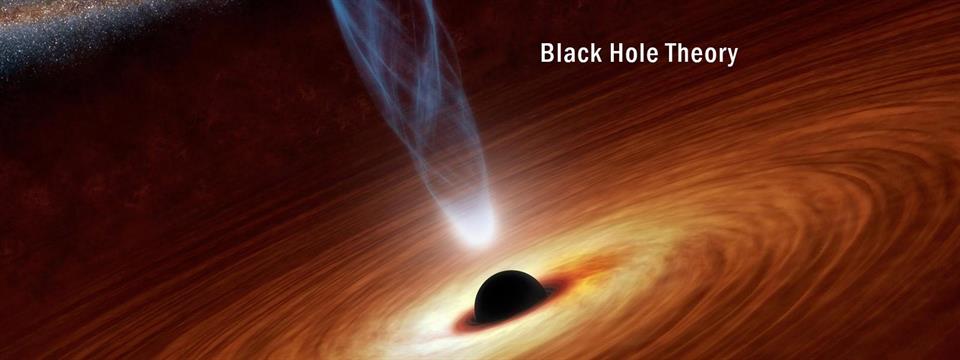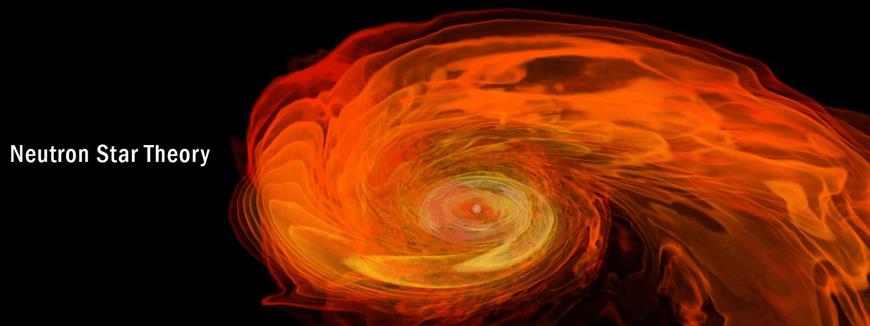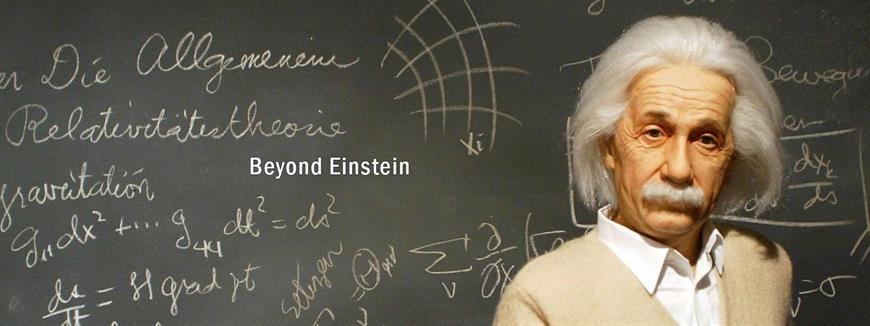Black Hole Theory
Black holes are perhaps one of the most fascinating predictions of Einstein’s theory. These objects are completely gravitationally collapsed objects with such immense gravitational fields that not even light can escape their interior. Within General Relativity, the two most famous black hole solutions were discovered by Karl Schwarzschild and Roy Kerr. These solutions represent non-spinning and spinning black holes in isolation, but black holes, like any other object in the Universe, are not alone in the universe. These objects are in constant interaction with matter and with gravitational fields from other stars in their surroundings. Such interactions perturb the Schwarzschild and Kerr solutions, inducing dynamics that tidally heat and torque the perturbed black hole.
Professor Yunes’ research group uses black hole perturbation theory to study such dynamical environments and determine how the mass, angular momentum, surface area and spacetime metric of Schwarzschild and Kerr black holes are affected by perturbing forces. These perturbations are important because they affect the gravitational waves emitted when two black holes inspiral. Any one black hole in a binary is constantly being perturbed by its companion, tidally torquing and heating it, which then translates to modifications in their orbital motion and the gravitational waves emitted. Once a perturbed black hole spacetime metric is obtained, one can use it to find the dynamical spacetime metric of a binary system. This is achieved by asymptotically matching the perturbed solution, valid close to either binary component, to a post-Newtonian metric valid sufficiently far away from either companion. These two metrics have overlapping regions of validity, inside which they can be related through certain multiple scale analysis techniques. Such a global dynamical metric can be used as initial data for numerical simulations, or as a dynamical background in which to study certain astrophysical processes, such as accretion in thin disks.
Neutron Star Theory
Neutron stars are compact objects with masses comparable to the Sun’s, but with radii of roughly 10 kilometers. Their internal densities exceed that of nuclear matter and their gravitational fields are the strongest in the Universe, except for those of black holes. Their magnetic fields are extreme, maybe reaching 1016 Gauss in magnetars. With spin periods anywhere from milliseconds to seconds, these neutron stars emit radiation in the radio and sometimes in the X-ray band that reach Earth. Every time the radiation beams cross Earth’s line of sight they can be detected with radio telescopes on Earth, or X-ray telescopes such as NICER. When neutron stars are in a binary system, they also emit gravitational waves, which can be detected by ground-based interferometers, such as LIGO, Virgo, KAGRA and LIGO-India. All of these radiation contain precise information about neutron stars, such as their spin period, their motion if in a binary system, and about the gravitational theory in play.
Professor Yunes’ research group studies neutron stars, their internal composition, and their potential use as probes of extreme gravity. These object exhibit a great degree of approximate universality between different macroscopically observable quantities, such as their tidal deformability, their induced quadrupole moment and their moment of inertia. By exploring these and other approximately universal relations in gravitational wave data analysis, future gravitational wave observations of neutron star mergers with ground-based interferometers (such as LIGO, Virgo, LIGO-India and KAGRA) can be used to discern the equation of state of supra-nuclear matter. Moreover, the gravitational waves emitted in neutron star mergers and the radio emission produced in binary pulsars can be used to test General Relativity to extremely stringent levels, orders of magnitude more strongly than in the Solar System.
Gravitational Wave Theory
Gravitational waves couple very weakly to matter. This means that they can propagate essentially unimpeded from large cosmological distance to Earth. But at the same time, this also means that they are very hard to detect. Given a photon that travels down a long 4 km tube, gravitational waves change the distance traveled by less than one part in a thousand of the radius of a proton. Such insanely small distances can only be measured with interferometry. But even then, the interferometric data was initially dominated by instrumental noise, with possible gravitational wave signals deeply buried in the noise. Today, ground-based detectors (such as LIGO and Virgo) have improved to the point that some gravitational wave signals are much more easily detected, while future space-based detectors, such as LISA, will detect signals with immense signal-to-noise ratios.
Professor Yunes’ research group develops theoretical “templates” or gravitational wave models that describe the possible gravitational wave signals that could be present in ground-based and space-based detector data. These models underpin the optimal techniques for detection and characterization of the signals. Once a detection is made, the estimation of parameters, selection of theoretical models and testing of hypothesis requires the detailed modeling of the signal and is best carried out with Bayesian techniques. The latter start with our current (prior) knowledge, and then they use the data to update it. Given a gravitational wave signal buried in the noise, the posterior knowledge obtained through such techniques yields probability distributions for the astrophysical parameters (such as the sky location, masses and spins of the systems etc) and the evidence that a particular model is preferred by the data.
Experimental Relativity
General Relativity and Quantum Mechanics are known to be fundamentally incompatible. One approach to aid in the construction of a complete unified model is to allow new observations to point theory-building in the right direction. Professor Yunes’ research group aids in this search by developing new tests of General Relativity when gravity is highly dynamical and nonlinear, like for example when black holes merge. These tests can verify some of the foundational pillars of Einstein’s theory, such as the principle of equivalence, parity and time-reversal invariance, the polarization content of gravitational waves, and the spin and mass of the graviton. Any observational sign of a violation of these foundational principles would be catastrophic for Einstein’s theory, and may point us in the direction of a more complete theory. Professor Yunes’ group studies, develops and implements both model-independent tests of Einstein’s theory (for example through the parameterized post-Einsteinian framework), as well as model-specific tests aimed at constraining particularly interesting models.
In addition to tests of general relativity with gravitational waves, Professor Yunes also studies other experiments that could be used to put Einstein’s theory to the test. These experiments include observations in the Solar System, such as observations of the Shapiro time delay and frame-dragging with spacecraft tracking, as well as observations with binary pulsars through radio timing. These tests are complementary to those that can be carried out with gravitational waves, and thus, they tend to constrain different sectors of a gravitational model.
Theories Beyond Einstein
Modified theories of gravity have been proposed to explain some anomalies in the observation of astrophysical phenomena. The rotation curves of galaxies suggest the presence of dark matter in galaxies, but the latter can be both interpreted as a new weakly interacting particle, such as an axion, or as a modification to Einstein’s theory at large scales. Similarly, the late-time acceleration of the universe can be interpreted as a non-vanishing (yet extremely small) cosmological constant, as a “strange” fluid with repulsive gravitational properties, or as a modification to Einstein’s theory.
Professor Yunes’ group studies some of these beyond Einstein theories in an effort to contrast them to all data available, from that obtained in the Solar System, to that from binary pulsars and using gravitational waves. The philosophy behind this is that any modification to Einstein’s theory need not only “solve” a particular problem in fundamental physics, but it ought to also pass the plethora of tests performed in the gravitational sector. Such comparisons of theory and data require a deep understanding of the physics involved in these modified theories, the calculation and modeling of observables and the use of data to discern between models. These efforts can then allow us to constrain the parameter space of beyond Einstein theories to determine whether the space allowed can still solve the problems these theories were designed to address.




